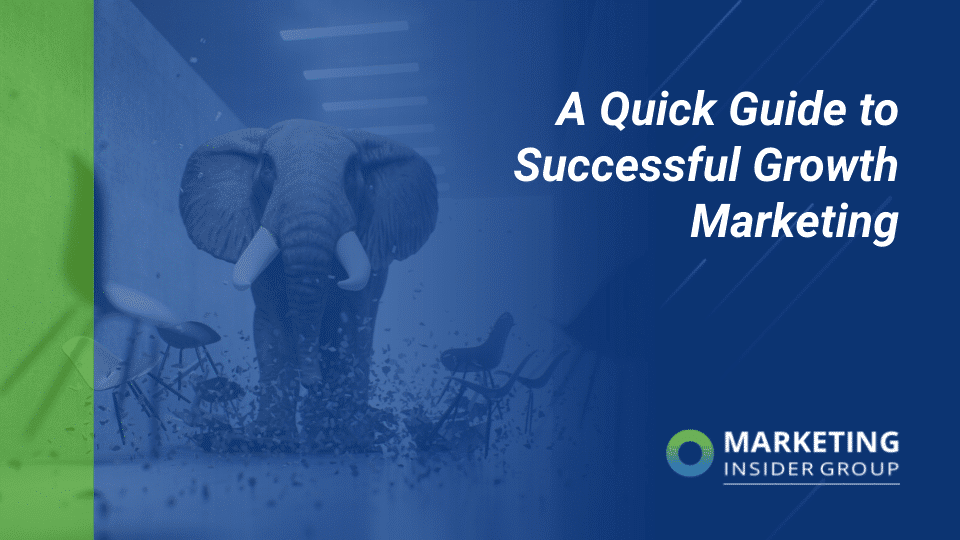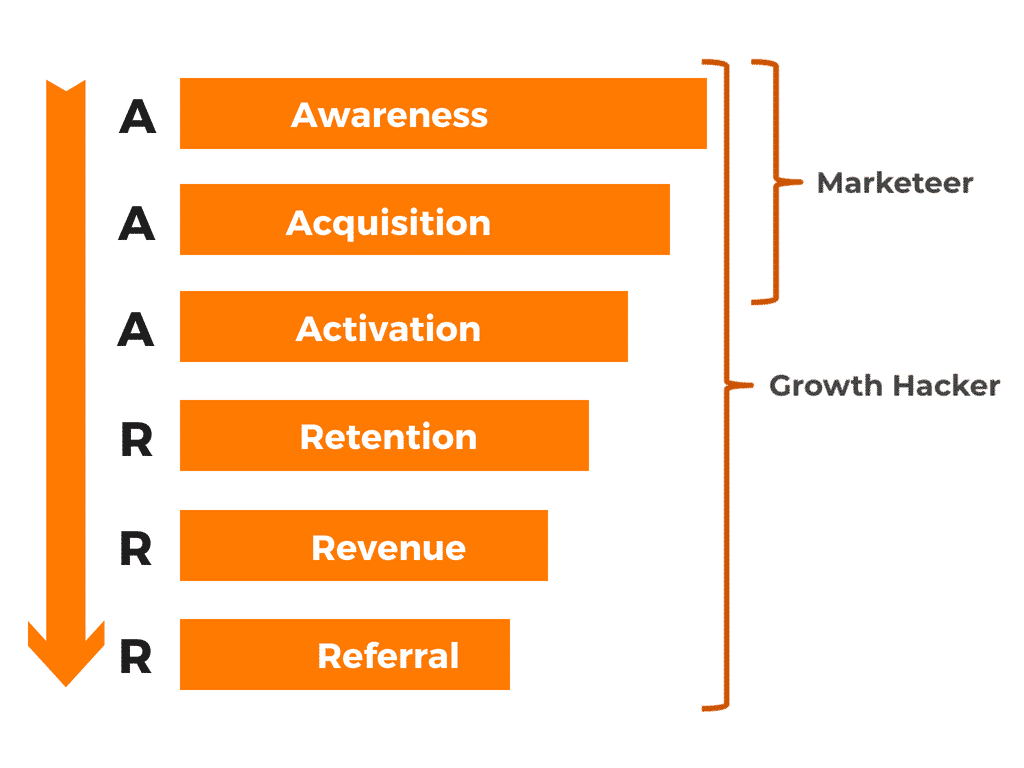
A Quick Guide To Successful Growth Marketing
What is growth marketing? You’ve likely heard of it, but you’re not sure how to put it into practice for your business. Growth + marketing seems like a perfect match, right!?
But, there’s a lot that goes into this nuanced term. You must understand some of the core components of growth marketing, as well as how to apply them effectively. When you do, new doors will open that you didn’t even know existed.
If you’re ready to start applying this more advanced method of marketing, you need to know where to start. Let’s take a closer look at what it is and some of the best practices for putting growth marketing into practice within your business.
What Is Growth Marketing?
First things first, let’s consider what this buzzterm is. Growth marketing is the next level of traditional marketing. It focuses heavily on building customer relationships, engagement, and authenticity. Think of traditional marketing, but on steroids.
Growth marketing layers modern tactics (like data-driven emails campaigns, A/B testing, research-driven blog posts, etc.) to create a well-rounded, robust marketing strategy.
The goal is to build loyalty. Growth marketing is not a short-term process but a long-term strategy that builds customer lifetime values.
What Makes Growth Marketing Stand Out from Others?
Growth marketing is a new opportunity for many companies. It takes a more broad approach to reach target audiences and convert them into paying customers while aiming to increase client retention rates by allowing companies to engage with current and new clients through numerous channels.

Image Source: AmuraTech
Unlike traditional marketing, it does not focus on just one channel or concept. Instead, it creates opportunities across the entire sales funnel for customer touchpoints. The end goal is that there are many opportunities to connect with and grow customer relationships.
What Are Some Core Components of Growth Marketing?
The growth marketing process involves implementing a wide range of tools to help you get to the desired outcome – increased leads and long-term customer loyalty. To do that, a number of strategies can be employed.
Data-driven email marketing campaigns are designed to get more people to open and read them because of the science behind their design. Another area is the use of value-additive blog posts that are so valuable and useful that people really do want to read them and share them.
All of this does not just drive clicks. In addition, it provides data to the marketing team that they can then apply to a wide range of outcomes. They can take the insights from each of these strategies and put them in place to create not just more growth but growth that’s sustainable over time.
Without further ado, here are a few key components of growth marketing to focus on to get you started:
SEO Optimization
SEO optimization is always a core component of this process, but it may focus more heavily on driving value to the customer rather than keyword stuffing in this marketing method. By conducting an analysis of the entire customer journey, you can understand exactly what the user experiences and where there are gaps in performance.
From there, you can tailor your data-driven content to focus on topics that will actually be of value to potential customers. This is the stuff you want to optimize for SEO.
A/B Testing
To develop a successful growth marketing campaign, individuals must do some testing. By testing out one design or piece of content and then testing out something else, it is possible to determine what the customer reacts to more effectively. Then, there’s more testing to further refine the outcome so that it remains constantly valuable to the person reading or engaging with that piece.
Instead of making decisions based on a “gut feeling” or a hunch, marketers can rely heavily on data to drive their decisions. It’s easy to see exactly what the results are likely to be when one decision is made or the other.
Cross-channel Marketing
Cross-channel marketing is the simultaneous use of various channels to give your customer a more cohesive customer journey than ever before. Instead of harping on email only, you can target them through in-app messages, texts, targeted ads, etc.
The key here: cross-channel marketing has to be targeted to each person individually. Every. Single. Time. What works for one might not work for most. But, when done tastefully, cross-channel marketing opens new doors of communication at every turn.
Create a Growth Marketing Team
One of the best practices in growth marketing is creating a team to manage the process. It is not beneficial when just one person is working on the strategy. Instead, having a group of people managing various sectors tends to work the best. Each person brings with them different skill sets, experiences, and understandings. Together, better decisions are made.
A growth marketing team may consist of a wide range of people – from analytics teams to pour through data to experts in sales and marketing. It may also include customer support and leadership team members.
Understanding the Customer Lifecycle
Your customer lifecycle is how you put yourself in the buyer’s shoes. When you commit to understanding your customer lifecycle, you gain insight on how they interact with your brand from beginning to end.
In the beginning, or activation stage, your buyer has different needs than a lead you’ve been following for weeks. You have to work to gain their interest and engagement. Once you’ve targeted them with welcome emails, high-level blog posts and free trials, you can begin to nurture them with promotions. This is all a part of growth marketing, and it can be a very involved process at times. So let’s dive a bit further into the customer journey and what to focus on, when…
Applying Growth Marketing to the Customer Journey
The customer journey is the set of steps people go through as they consider purchasing a product or service. Growth marketing touches each and every part of this. Here’s a look at what the funnel looks like:

Image Source: GrowthWithWard
Awareness: This relates to how many people reach through to you across numerous marketing methods.
Acquisition: This refers to the number of people who end up on your website or in other metrics within your business.
Activation: In this area, the customer takes the first step in interacting with your business, such as signing up for a subscription or requesting a trial of a product.
Retention: In this stage, the focus is on the number of customers who continue to use the product or service and come back again.
Revenue: This stage refers to how much the customer is paying for their service or connection with you.
Referral: This stage refers to the point when your customer not only buys from you but begins to refer your business to other people.
Where Does Success Come from in Growth Marketing?
The ultimate goal of growth marketing teams is to determine what works. They try out a wide range of things to determine which will fail and which will produce results. They then refine that further until they have a very specific focus.
By using random methods of marketing, they strive to find the few things that “might” work so they can target that to create a profitable route ahead.
Why Do It? What Are the Benefits of Growth Marketing?
A carefully created plan yields numerous benefits. To be successful, it’s critical to work with a growth marketing team or create one for your in-house operations. Hiring a company to provide this type of service may increase success.
How do you know there is success? You may see some of these benefits. Improved brand recognition (for the right reason) with the goal of developing those customers that are brand loyal is a common benefit of growth marketing. Improved SEO outcomes, as the data provided through this strategy typically enables you to make better decisions with all aspects of SEO, making every dollar count, is also an area that most companies see benefits.
You may have better long-term retention rates for customers – they come back, making your customer lifetime value higher than before. And organizations can count on building new customers from the ground up, including providing them with more of an opportunity to connect with your business. This leads to a better return on any investment you make, including over traditional marketing methods.
Killer Examples of Growth Marketing
The Rise of Airbnb
Airbnb took the travel world by storm by introducing a never-heard-of-before option for vacation. The company owes some of its success to effective growth marketing.
For example, during its founding year, the Airbnb founders started listing participating venues on Craigslist. By using a channel other than their own, they had customers before their business was even off the ground.
By listening to their customers’ experience while booking at hotels, the founders knew to emphasize and prioritize simplification when designing their interface, a key component that helped push them over the $10 billion value marker.
Slack’s Record Breaking Growth
The communication software provider broke records in growth since their launch in 2013. The company now hosts over 20 million daily active users in 2023.
How did they do it? They solved a problem so many were experiencing, but did nothing about. 70% of their initial customers didn’t have any communication software prior to slack.
IBM Nailing Growth Marketing
Who says old dogs can’t learn new tricks? Legacy company, IBM, proved a lot of skeptics wrong with their growth marketing strategy. They implemented a handful of strategies, like optimizing their onboarding experience to make visitors more likely to sign up for trials. The simple step of revisiting a user’s first interaction with their brand made a huge difference in the long run.
IBM didn’t stop there, they took this optimization strategy further and toko another look at all of their products, making sure they weren’t falling behind in terms of user experience (one of the most important aspects of a software company in 2023).
Quick Takeaways
Why invest in growth marketing?
Growth marketing still focuses on acquiring customers but also has an element of retaining those customers long term. When building your marketing plant, it’s essential to invest wisely and make every dollar count. That’s what growth marketing does.
By applying more effort and a more refined method of reaching your customers, you work to build not just that one sale, but you create an opportunity for ongoing connectivity with that customer. That boosts your ROI over traditional marketing methods.
Growth marketing is innovative
One of the foundations of growth marketing is that it is always growing and changing as the market industry is. It puts in place data-driven technologies that aim to nurture and build the relationship a customer has with a brand. New technologies help to make this a bit easier today than ever before.
What’s more, using data to power decisions isn’t new, but it is something that more companies are looking to invest in to reach their customers more efficiently. Data driven marketing is a core component of growth marketing success.
The goal of testing
One of the most important parts of growth marketing is testing. A/B testing is a common version. In this form of advertising and marketing, the goal is to connect with customers in the most effective manner possible. Testing makes that possible.
It’s much like a researcher testing various types of hypotheses they have to determine the best solution. Once they reach one answer, they make other changes, with the goal of improving each time.
The job is different
The job of a growth marketer is a bit different than that of a traditional marketing pro. In traditional marketing, marketers often spend most of their time focused on the top of the customer funnel.
A big difference here is that the growth marketer is focused on every area of the sales funnel. That means the team has to put attention to each area of the customer funnel, creating different targeted strategies in all of these areas.
Is Growth Marketing Right for You?
As a business owner, marketer, or interested party, you know that data is everywhere. Taking advantage of that data and applying it to the way you market to your would-be customers yields better results. It provides you with the tools to reach new customers and build sales. At the same time, it helps to target customers at every point of the buying journey. That means you are getting the most you can for your investment.
Growth marketing isn’t just for elite companies, but it can apply to any business model and just about any industry, even content marketing. Check out our data-driven SEO Blog Writing Services or schedule a free consultation to learn more about our strategy.






